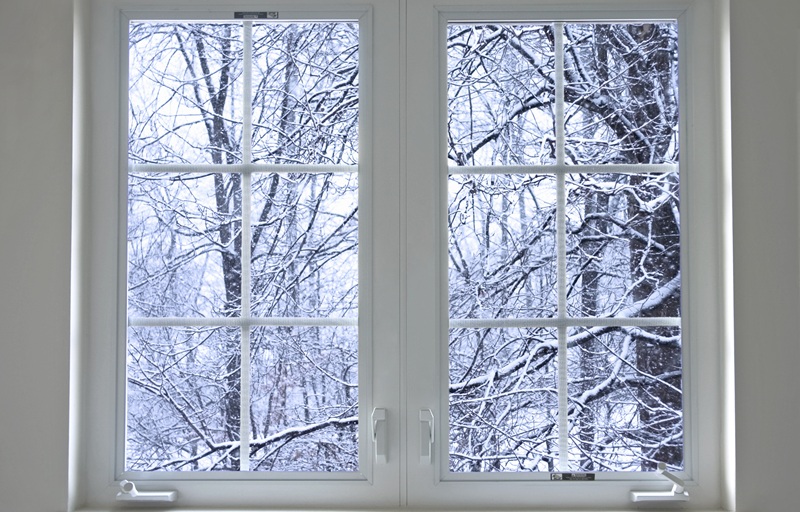With summer just around the corner, now is the ideal time to assess your home’s energy efficiency before temperatures drop later in the year. While insulation may not be top of mind during the warmer months, addressing window insulation now can help you avoid cold-weather discomfort and rising heating costs when winter returns. Planning ahead gives you time to explore cost-effective solutions—from quick DIY fixes to full window replacements—without the rush or delays that often come during peak season. Use this guide to identify the best strategies for improving window insulation and ensuring your home is ready when the cold sets in.
Why Well Insulated Windows are Important
Properly insulated windows are crucial for winter energy efficiency. Heat loss through poorly insulated windows forces heating systems to work harder, increasing energy costs while reducing comfort. Older windows commonly create drafts, condensation, and temperature inconsistencies—even tiny gaps significantly impact energy consumption and comfort levels as warm air escapes and cold air infiltrates your living space.
Several effective insulation options exist to address these issues. Weatherstripping seals frame gaps quickly and affordably, while window film creates additional cold air barriers with minimal effort. For more permanent solutions, energy-efficient replacement windows offer superior insulation through double or triple-pane glass with gas fills, though at higher initial cost. Thermal curtains provide supplementary protection, especially at night when temperatures drop further.
DIY Insulation Techniques
Common household materials can effectively improve window insulation without professional assistance. Weatherstripping tape applied to window frames seals air leaks for immediate impact, while removable caulking creates temporary seals perfect for rental properties. Plastic shrink film kits provide substantial insulation improvement when properly heat-shrunk using a hairdryer, creating a tight air barrier between your living space and window surface.
Draft stoppers or “door snakes” placed along windowsills block bottom drafts effectively, while bubble wrap applied with water creates surprising insulation by trapping air pockets against glass surfaces. Thermal curtains with multiple fabric layers can reduce heat loss by up to 25% when properly installed. For historical windows that cannot be replaced, magnetic window insulation systems offer excellent sealing while maintaining original aesthetics. These affordable DIY solutions can significantly reduce energy bills and improve comfort with minimal tools and expertise required.
When to Consider Window Replacement
Several warning signs indicate your windows need replacement rather than simple insulation. Persistent drafts around window frames suggest significant air leakage that weatherstripping cannot fully address, while foggy condensation between double-pane glass reveals broken seals that permanently compromise insulation value. Steadily increasing energy bills—particularly when other factors remain constant—often point to deteriorating window performance, and operational difficulties like sticking or jamming windows indicate structural issues beyond simple repair.
Window age serves as a critical evaluation factor in replacement decisions. Windows manufactured before 2000 typically lack modern energy-efficient technologies like low-E coatings, argon gas fills, and proper thermal breaks. Visible deterioration including rotting wooden frames, corroded metal components, or cracking vinyl presents both functional and aesthetic concerns. Compromised window integrity not only affects appearance but creates entry points for moisture that can lead to extensive structural damage, mold growth, and indoor air quality issues throughout your home.
Glass technology advancements represent one of the most compelling reasons for window replacement. Single-pane windows transfer approximately 20 times more heat than insulated walls, while early double-pane models without modern coatings perform only marginally better. Contemporary energy-efficient windows with features like triple glazing, low-emissivity coatings, and insulated frames that can reduce energy transfer.
FAQ: Insulating Windows for Winter
Is window film a good option for winter insulation?
Yes, window film is an effective and affordable way to improve insulation during the winter months. It creates an additional barrier against cold air, helping retain indoor heat and reduce overall heat loss. Easy to apply, window film can enhance energy efficiency and make your home feel warmer. It also helps minimize condensation on the glass, keeping your windows clearer throughout the season.
What are the benefits of using thermal curtains for window insulation?
Thermal curtains are designed to help regulate indoor temperatures by reducing heat loss in the winter and blocking excess heat in the summer. This added layer of insulation minimizes drafts, which can lower energy usage and ease the workload on your heating and cooling systems.
How do I use weatherstripping to insulate my windows?
egin by inspecting windows for air leaks—run your hand along frames to detect drafts or hold a lit candle to identify flame movement near gaps. Thoroughly clean application surfaces with rubbing alcohol to remove dirt and oils that prevent adhesion. Measure each gap precisely before cutting weatherstripping materials, selecting V-strip, tension seal, or compression types for movable parts and foam or felt tape for stationary connections. Cut strips with slight excess length rather than too short, then press adhesive-backed weatherstripping firmly into position, ensuring continuous contact with both surfaces when windows close. Test operation after installation—windows should move freely while maintaining complete contact with weatherstripping.
Contact DaBella for Your Summer Window Replacement Project
As summer approaches, now is the ideal time to upgrade your home’s windows before extreme heat arrives. Summer’s longer daylight hours and favorable weather conditions create perfect circumstances for efficient window installation projects. DaBella offers Glasswing vinyl replacement windows that provide superior insulation against summer heat while lowering cooling costs during peak temperature months.
Our ENERGY STAR rated Glasswing windows meet strict EPA efficiency guidelines, blocking harmful UV rays and preventing heat transfer that forces air conditioning systems to work harder. Summer installations minimize home exposure to elements and allow sealants to cure properly in warm conditions—advantages not available during colder seasons. Choosing DaBella means investing in windows that maintain cooler indoor temperatures while complementing your home’s architectural design.
Schedule your window replacement now by contacting us at 844-DaBella to secure installation before peak summer and winter temperatures arrive. Our expert team will guide you through selecting the perfect windows to enhance both efficiency and appearance during this optimal installation season.

